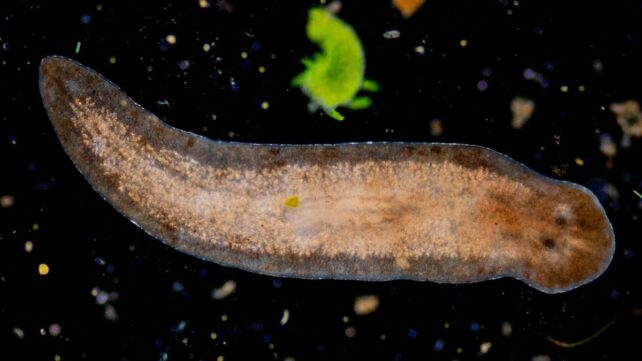A tiny animal with an extraordinary ability could teach us how to regenerate lost or damaged body parts.
A beheading is lethal for most animals, but not for the flatworm. Chop its head off, and it will simply grow back. The disembodied head, too, can grow itself a whole new body in a matter of days – in fact, almost any fragment of this worm can regenerate an entire body.
This remarkable power comes down to stem cells, and new research into flatworm biology shows that we've much more to learn about how these self-renewing, undifferentiated cells work to rebuild body parts.
Related: Axolotl Discovery Brings Us Closer Than Ever to Regrowing Human Limbs
Schmidtea mediterranea, a freshwater flatworm (or planarian), has adult pluripotent stem cells spread all throughout its oblong pancake of a body. These cells have the potential to grow into any other kind of cell, and planarians are particularly good at stockpiling them.
In humans, stem cells account for less than 1 percent of our bodies; meanwhile, around 15 percent of a planarian is stem cells. When a flatworm is injured, its reserve of stem cells rapidly multiply and can even travel to where they're needed.

In most other animals, stem cells are stored in particular places in the body, called niches, where their futures are pretty much planned out for them by the surrounding cells.
"For instance, human blood-forming stem cells reside in niches within bone marrow where they divide to self-renew and make new blood cells," says Frederick Mann Jr, a biologist from Stowers Institute for Medical Research who led the new study.
Planarian stem cells, on the other hand, seem quite indifferent to their neighboring cells. For instance, Mann and colleagues noticed they were often surrounded by a very large kind of cell with multiple 'arms', which the team named 'hecatonoblasts' after a many-armed monster from Greek mythology.
And yet, close analysis of the planarian transcriptome, in both healthy planarians and those recovering from injury, revealed hecatonoblasts had no role in determining the fate of stem cells. This, Mann says, "is counterintuitive to a typical stem cell-niche connection."
Instead, the stem cells' fate and function appear more closely associated with intestinal cells. These had no direct contact with the stem cells, and yet experiments revealed they were essential in regulating the cells' position and function during regeneration.

"We've now shown having a normal niche may not be essential for stem cells to work," says Mann. "Some stem cells, like those in the planarian flatworm, have figured out a way to be independent and can turn into any type of cell without needing a nearby niche."
But there's a good reason our own stem cells are reined in: In many animals, humans included, cells that grow unchecked are often better known as cancers.
"Our hope is to uncover the basic rules that guide stem cells to become specific tissues as opposed to going rogue, as most tumors in humans begin when stem cells stop following these rules," says Stowers molecular biologist Alejandro Sánchez Alvarado.
"The more we understand how nearby cells and overall signals in the body work together to boost the ability and power of our stem cells, the better we'll be at creating ways to improve the body's natural healing.
"This knowledge could help develop new treatments and regenerative therapies for humans in the future."
This research was published in Cell Reports.

